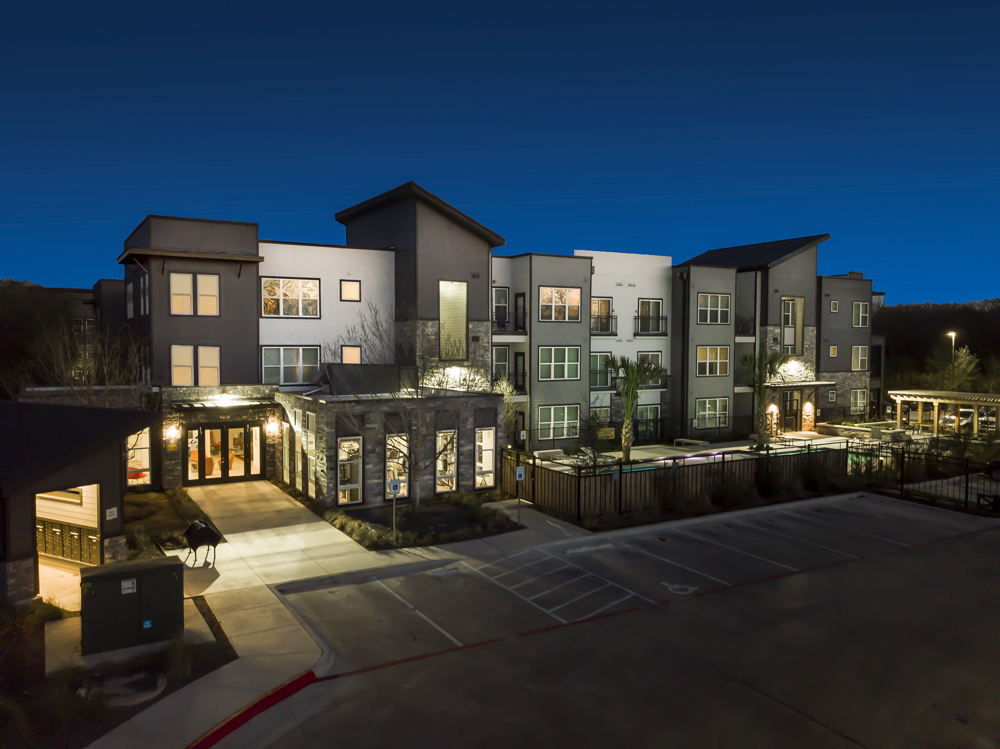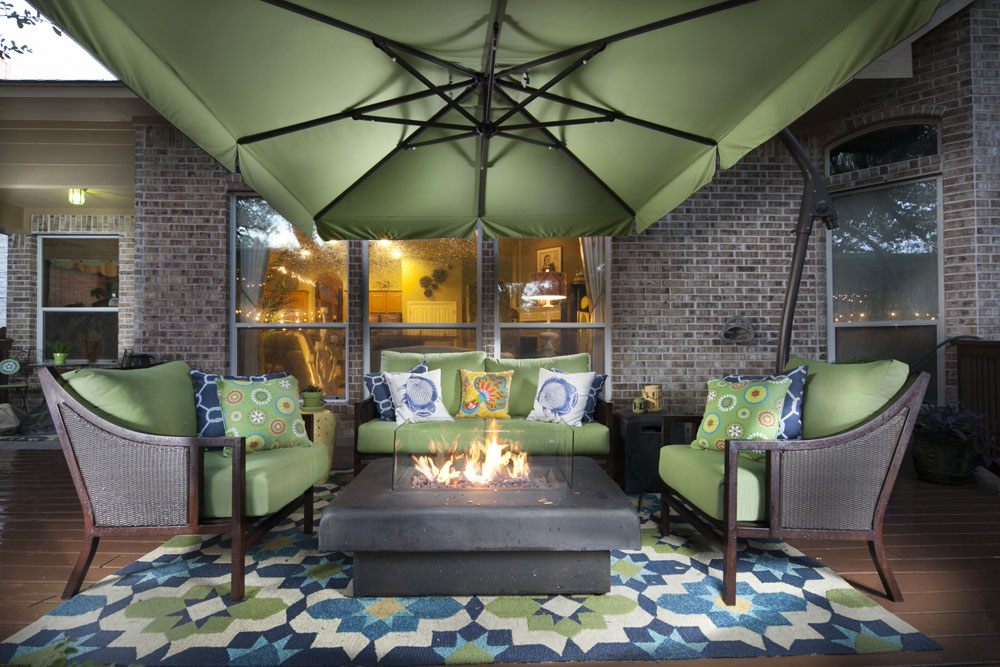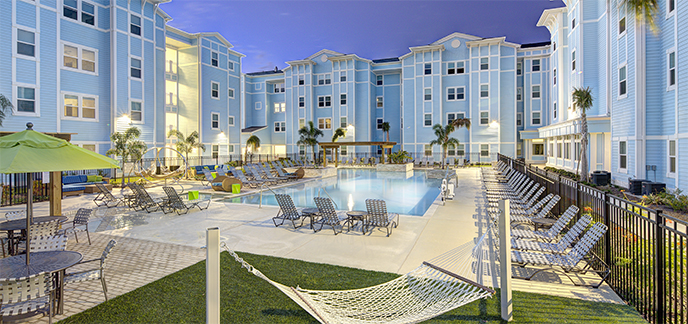Some Recent Austin Architectural photography of Roscoe Property Managers
Some Recent Austin Architectural photography of Roscoe Property Managers.
Roscoe Property Managers asked me to photograph interiors and exteriors and drone aerial photos of several multi family developments here in Austin. These images show some the outstanding designs that Roscoe can achieve. Most of the ground photos are on a Manfrotto Neo Tech Tripod with a Canon 5 D Mark III and a TS-E 17, f/4L Tilt Shift Lens. The aerial photos are with my DJI Mavic Pro 2 Drone.

Arise Riverside Architectural Photography Austin

Arise Riverside Architectural Photography Austin pool at twilight

WILDER Apartments Architectural Photography Austin pool at twilight

120 Ninth San Antonio Apartments Courtyard at twilight

THE BRIXTON Multi Family Apts Drone Aerial Photograph
Part 1: Abstract Photography for Students, All of my Mentees from Westlake High School
- At April 02, 2020
- By Johnny Stevens
- In Aerial photography, architecutral, austin architectural photographer, Austin photographer, camera control, commercial photography, dichotomy, Drone photography, editing, Fine Art, lifestyle photography, light painting, lighting, Photography education, Photography Mentor, portrait, portrait photography, professional, real estate, real estate photography, shutter speed, speedlights, spot lighting, student housing, student lifestyle, Tilt shift, tilt-shift lens, video, videography
 0
0
Part 1: Abstract Photography for Students
All of my Mentees from Westlake High School.
Abstract Photography for Students is a challenge. I thought it was time to assemble all of the educational photographic projects I have done with my senior students of the Independent Study Program at Westlake High School over the last 8 years. I was surprised when I went back into my photography archives to see some of the projects that I have forgotten about. I am doing this in 5 Posts so the reader does not get overwhelmed. This first post is about our Abstract Photography exercises. So here we go.
When I agree to teach a student, I tell them that my approach to teaching is to expose them to as many different genres of photography as possible, so they can learn how to leverage the settings on their cameras, read natural light, learn how to control flash and strobe light, how to work with humans who hate to have their photos taken, and evaluate the environment for challenges.
The photography genres I like to introduce them to are:
- Abstract Photography
- Portrait Photography
- Still Life and Landscape Photography
- Architectural Photography
ABSTRACT PHOTOGRAPHY:
My first student 8 years ago was Elena. With her I learned how difficult shooting rising smoke is. We learned that having a flash at 90 degrees to a smoking piece of incense was better than having two flashes, one in each side. The contrast within the smoke was better and made it easier to identify an interesting moment within the otherwise chaotic billowing smoke. Then we edit the image mostly by eliminating surrounding smoke that did not lend itself to the formation we identified. More often that not (and this goes for painting too) we tend to identify with abstract formations that remind of some variation of human forms. Here are Elena’s images:
I had forgotten about this image, and today it is one of my favorite. It is whimsical and requires some time to process its intricacies.

Elena’s Abstract Smoke by Austin fine art photographer Johnny Stevens
This one I called Wisp of Elena. It clearly has some alien life forms that attract the eye….

Elena’s Abstract Smoke #2 Alien formation by Austin abstract photographer Johnny Stevens
My mentee Nolan shot this smoke image. Very often the way smoke rises and curls, it tends to show formations of vertebrae and human bones.

Nolan smoke abstract photography austin
And this one from my mentee Morgan;

Morgan abstract smoke photography by Austin photographer Johnny Stevens
For Jake’s Abstract Smoke Photography exercise, he created 2 edited versions from this first raw file.

Jake’s original raw file of smoke rising

Final edit of abstract smoke rising photograph

Final edit 2 of abstract smoke rising photograph
My mentee Krishan and I tested our reflexes at shooting water drops in a glass.

Krishan’s composition of 4 drops of water
After an hour of gruelling timing to pull the trigger at the right time we learned that we could not get the effect we were looking for which is achieved by buying a Pluto Valve Drop Regulator. It releases drops timed exactly with the shutter of the camera, but more importantly it releases 2 consecutive drops so that the upward splash of the first drop smashes into the one coming down and creates a beautiful mushroom effect. As seen in these two examples:

water drop 1 by fstoppers

waterdrop 2 by 500 px blog
To introduce my students to compositing in Photoshop, I will often give them the task of taking a series of images and composite parts of them into a master image. In this case I gave Nolan these images from my Mannequin folder of images to create a composite:

Mannequin for abstract photoshop compositing lesson Johnny Stevens Austin Photographer



Final composite by Nolan
Testing the Crop loss with Canon TS-E 17mm lens on Canon Mark iii versus on the Sony A7R with Matabones V adapter
Testing the Crop loss on with Canon TS-E 17mm lens on Canon Mark iii
and on the Sony A7R

The Canon 5D Mark iii with TS-E 17 mm tilt shift lens professional photographer austin
My buddy Marc Swendner and I got the idea of testing the focal Canon TS-E 17mm tilt shift lens on both my Canon Mark iii and with his new Sony A7R with the Metabones V adapter ring. Both of us shoot architectural photography and since he bought the new Sony A7R he wanted to see if the new Sony camera would support the TS-E 17 mm tilt shift lens that we both depend on for our work. This 17 mm tilt shift lens is absolutely the cats meow because it is dead on sharp and it allows us to control the perspective of our interior and exterior photographs. Our hopes were that the Sony AR7 could deliver the same focal width with the adapter ring on it. Here are the results. The adapter ring on the Sony does crop the image significantly. It renders the TS-E 17 mm lens to be equivalent to about a 26 mm lens after the crop effect.

Austin photographers Johnny Stevens and Marc Swendner testing the TS-E tilt shift 17 mm lens with the Canon and the Sony

The Sony AR7 with adapter ring

Image from the Canon 5 D Mark 3 with 17mm tilt shift lens Johnny Stevens photography

Image from the Sony AR7 with Metabones V adapter ring on the 17mm tilt shift lens Marc Swendner photography
Architectural
- At July 22, 2014
- By Johnny Stevens
- In Aerial photography, american campus, architectural photos, architecutral, austin architectural photographer, Austin photographer, commercial photography, drone, Drone photography, Drone Video, HDR, hotel, light painting, Photography, professional, real estate, real estate photography, Tilt shift, tilt-shift lens
 0
0

U Pointe on Speight Student housing architectural exterior real estate photograph
Johnny’s expertise in light painting, spot lighting, blending techniques, and special tilt shift camera lenses allow him to reveal the inherent beauty and detail of a space or building. Johnny’s student housing and commercial architectural work, with companies like American Campus Communities, The Michaels Organization, and Landmark Properties take him across country to capture images that are displayed on the pages of dozens of premier student housing and commercial real estate sites.
Post Processing


From the Photographer: Architectural Photographer in Austin, Johnny StevensThere are as many way to photograph architecture as there are to shoot portraiture. Choices in photographing architecture or real estate include adding light to the scene or just shooting in natural light. Should I add models and actors or photograph without? Shall I shoot with a normal lens or photograph with wide angle lenses? Must I pay the price for tilt shift lenses or not? Must I photograph on a tripod or make the mistake of not doing so. What kind of camera do I need? What resolution images should I shoot? Raw images or jpeg? Do I need to balance the color in the room with filtered lighting or do color correction later in Photoshop? Do I need to hire a set designer or move things around myself?One of the key considerations for my architectural work is composition and perspective and that is why I use tilt shift lenses. These are referred to sometimes as perspective shift lenses. Not only do they let you tilt the lens to create selective focus – or a sense of shallow depth of field (used for miniaturization photography) they also allow you to shift the lens up and down on a vertical plane that honors the vertical walls of the building, house or room you are shooting. It is not uncommon for photographers to forego the expense of these tilt shift lenses and shoot with a 14mm to 28 mm lens for wide shots, and then fix the perspective or the convergence of parallel lines (the walls) in Photoshop later by transforming the image, but there is a critical point at which Photoshop transformed rooms or building begin to look spooky and abnormal because the top or bottom of the image has been stretched in to emulate a truly vertical image.The added value off the tilt shift lenses is that it gives you the opportunity to photograph a vertically true lower shot and then shift up on the room to shoot an upper version of the room and then photomerge them together in Photoshop to render an image with lots more real estate (no pun intended) – a much larger area than the SLR camera shoots in a single shot. So now an image that comes out of the camera with a native 3 x 2 aspect ratio gets closer to a much taller 1 x 1 aspect ratio. It offers my clients more latitude in cropping the image the way they please, depending on the space requirements of their print layout, or web page.Another consideration for photographing architecture is high dynamic range (HDR) versus using lights to light the room. I use both techniques and often blend the two. HDR makes traveling and shooting much more efficient but it also presents some issues that have to be corrected later. I bracket my shutter speed 5 exposures – 1.5 stops apart – one normal exposure, over 1.5 and over 3 stops and under 1.5 stops and under 3 stops. This is why you have to use a tripod. Exposures climb up to 30 seconds for exterior night time scenes. The faster shutter speeds in this wider bracket renders more detail in the windows after fusing them in Photomatix. My settings in Photomatix are my secret sauce but have found a setting that can render a scene looking very normal rather than with the excessive surreal effects that HDR can often produce, and the yellow and orange cast that are often rendered. I often will photograph a scene with HDR and then go around the room and spotlight areas (especially if they are backlit by a window making the foreground dark) that need an exposure pop and then mask in those areas later in Photoshop, after color correcting both the HDR image and the single exposure images.

































